Jenipapo-Kanindé
- Self-denomination
- Where they are How many
- CE 328 (Siasi/Sesai, 2014)
- Linguistic family
The Lagoa da Encantada is the sacred space where the Paiaku place their stories and myths. The ecological environment comprised by the lake and the woods that surround it is central in the group’s cosmology and unity. The memory of the ancestors, the “Indian roots”, the “Indian land”, the “mato” (woods), the sense of “belonging” to “one single family” are constantly evoked.
Name, population and location
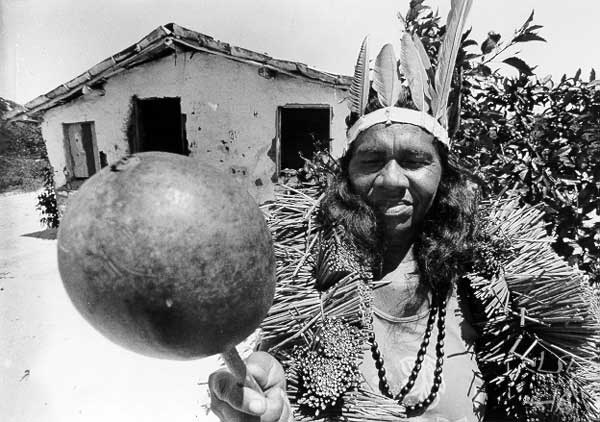
The name Payaku designates a once large ethnic group that, in the 16th Century, lived along the entire sub-coastal stretch of the present-day states of Rio Grande do Norte and Ceará, in Northeastern Brazil.
Today the Payaku live in a portion of the same region – the Lagoa da Encantada, in the municipality of Aquiraz, in the State of Ceará. They have individual titles of the lots they live in, but the land is shared collectively. In 1997 they were visited by the Funai (Fundação Nacional do Índio – National Foundation for the Indian –, Brazil’s official organ for Indian affairs); currently they are waiting for the demarcation of their Indigenous Land, which will have 1,086.62 hectares (in phase of identification by the GT 1093/PRES/ Funai, whose report has not yet been finished).
Their population, which in 1982 was 96 individuals, reached 180 in December of 1997 and 302 in 2010.
Paiacú or Baiacú is the Brazilian name for the puffer, a fish with a poisonous gland that is very common in the coast of Northeastern Brazil. The name Payaku has remained in the memory of the older Indians and of the group’s leaders, but until the end of the 1980s they were referred to as the cabeludos da Encantada (the long-haired ones from the Encantada Lake) by their non-Indian neighbors. The denomination Jenipapo-Kanindé, which they were unfamiliar with, was incorrectly applied to them based on superficial historical research, which confused the Paiaku with these other peoples that originally lived in the region when the group began to participate in the indigenous movements.
The Payaku speak only Portuguese. There are no records left of their original language, which may have been similar to that of the old Tarairiú, a people that lived in the caatinga (the semi-arid interior of Northeastern of Brazil).
History of contact
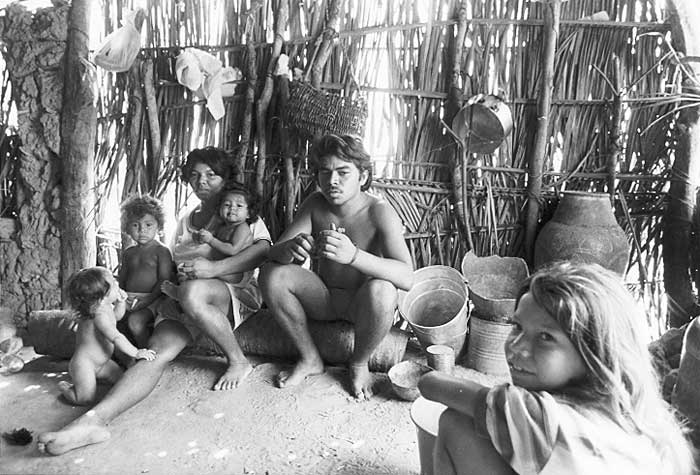
Until the 18th Century, the Payaku lived along the Açu, Apodi, Jaguaribe, Banabuiú and Choro rivers. The Jenipapo and Kanindé – whom, like the Payaku, have similarities with the Tarairiú in language and culture – lived on the vicinity of the Apodi, Jaguaribe and Choró rivers. Like other non-Tupi peoples, they all became known by the generic denomination of tapuias do Nordeste (tapuias of the Northeast).
The contact of the Payaku with the whites has more than four hundred years. Historical sources register that, in Ceará, the earliest contacts of the Portuguese with this people occurred between 1603 and 1608. Unwilling to accept colonization, they were submitted to violence, then were enslaved and gradually lost their lands. They rebelled constantly until they were subdued, and almost totally decimated, during the so-called Guerra dos Bárbaros (War of the Barbarians), between 1680 and 1730.
In 1707 they were aldeados (put in villages) by Jesuit missionaries on the Choro River, in Aquiraz, near where they currently live. In 1764 the name of the Aldeia dos Paiacús was changed to Monte-Mor-o-Velho, a denomination that was kept until 1890, when it became the village of Guaraní (1890-1943), the present-day seat of the municipality of Pacajus. The Jenipapo and the Kanindé were aldeados between 1731 and 1739 on the Banabuiú River, and put together in the Aldeia da Palma, later called Monte-Mor-o-Novo-d'América (1764-1858), in the present-day municipality of Baturité.
Socio-economic aspects
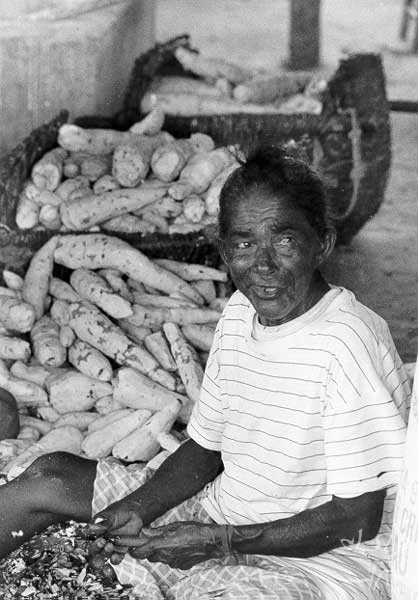
The Paiaku economy is based on agriculture, fishing and gathering. They plant manioc all year long, and in the rainy season plant corn, beans, yams, pumpkins, gherkin and greens. The gathering of cashews, murici (a tropical fruit), mangoes, coconut and other fruits and nuts is seasonal. The men make plaits with vines and carnaúba (a type of palm tree) straw in the form of baskets, hats and caçuás (long baskets for carrying items), in addition to fishing nets. The women are masters in lace making and pottery.
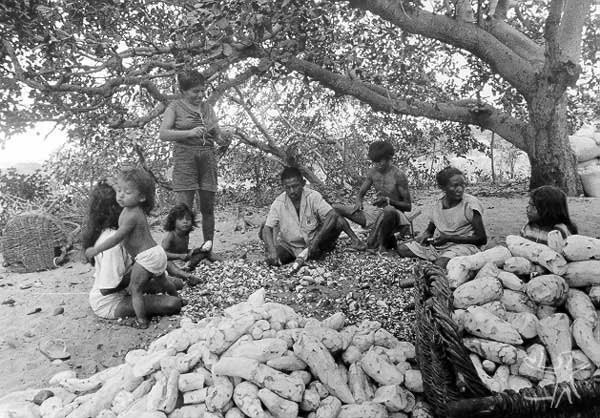
Inter-ethnic marriages are rare, despite the proximity to non-Indians. Preferential marriages are between cousins, and the majority of the Paiaku were born and raised in the Lagoa da Encantada. Emigration is uncommon and new arrivals to their area rarely occur.
Notes on the sources
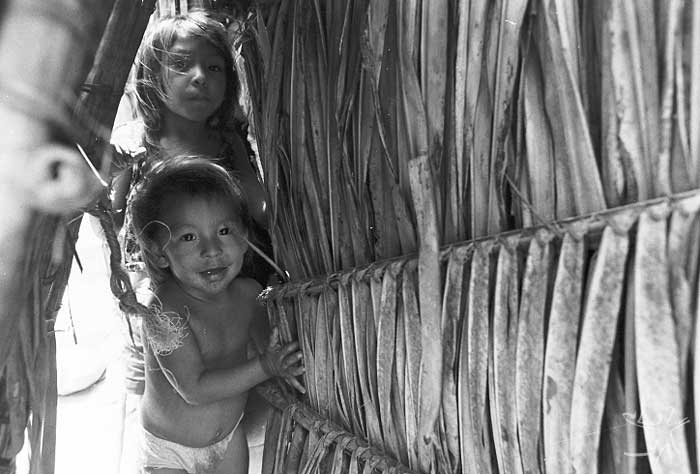
There are no studies that deal specifically with the Payaku, except the Censo da Lagoa da Encantada (Census of the Lagoa da Encantada), a research report by Maria Sylvia Porto Alegre, and the Master’s thesis, still being written, by her student Roselane Gomes Bezerra. Recent works, covering the region, such as Aldeias Indígenas e Povoamento do Nordeste no Final do Século XVIII (Indigenous Villages and Peopling of Northeastern Brazil in the End of the 18th Century), by Maria Sylvia Porto Alegre, and Documentos para a História Indígena no Nordeste (Documents for the Indigenous History of the Northeastern Brazil), by the same author and others, include information on the Payaku. They are similarly dealt with in older studies, such as Robert Lowie’s chapter on the Tarairiu in the Handbook of South American Indians, the article “Tapuias do Nordeste”, by Pompeu Sobrinho, and the books Os Aborígenes do Ceará (The Aborigenes of Ceará), by Carlos Studard Filho, Algumas Origens do Ceará (Some Origins of Ceará), by Antonio Bezerra, and the História da Companhia de Jesus no Brasil (History of the Companhia de Jesus in Brazil), by Serafim Leite.
Sources of information
- BEZERRA, Roselane Gomes. O despertar de uma etnia : o jogo do (re)conhecimento da identidade indígena Jenipapo-Kanindé. Fortaleza : UFCE, 1999. (Dissertação de Mestrado)
- PINHEIRO, Joceny (Org.). Ceará, terra da luz, terra dos índios : história, presença, perspectivas. Fortaleza : MPF ; Funai, 2002. 166 p.